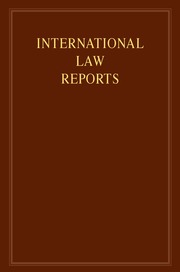No CrossRef data available.
Article contents
Indigenous Communities of the Lhaka Honhat (Our Land) Association v. Argentina
Published online by Cambridge University Press: 09 February 2023
Abstract
Human rights — Right to property — American Convention on Human Rights, 1969 — Article 21 — Whether Argentina providing indigenous communities effective title over their ancestral communal property — Article 2 — Obligation of States to adopt domestic legal provisions — Whether Argentinian domestic law providing adequate legislative and administrative procedures to guarantee right to communal property — Article 1(1) — Obligation of States to protect rights of persons under their jurisdiction — Article 23(1) — Right to participate — State obligation to consult indigenous peoples on projects or works on communal property
Human rights — Article 26 of American Convention on Human Rights, 1969 — State obligation on progressive realization of rights implicit in the economic, social, educational, scientific, and cultural standards in Charter of the Organization of American States, 1948 — Right to a healthy environment — Right to food and water — Right to cultural identity — Whether rights to a healthy environment, food and water and cultural identity encompassed under Article 26 — Whether economic, social, cultural and environmental rights under Article 26 autonomous and justiciable before the Court
Human rights — Right to judicial protection within a reasonable time — Whether provincial court exercising unreasonable delay in determination of Decree concerning allocation of land — Whether violation of Article 8(1) of American Convention on Human Rights, 1969
Keywords
- Type
- Case Report
- Information
- Copyright
- © Cambridge University Press & Assessment 2023


